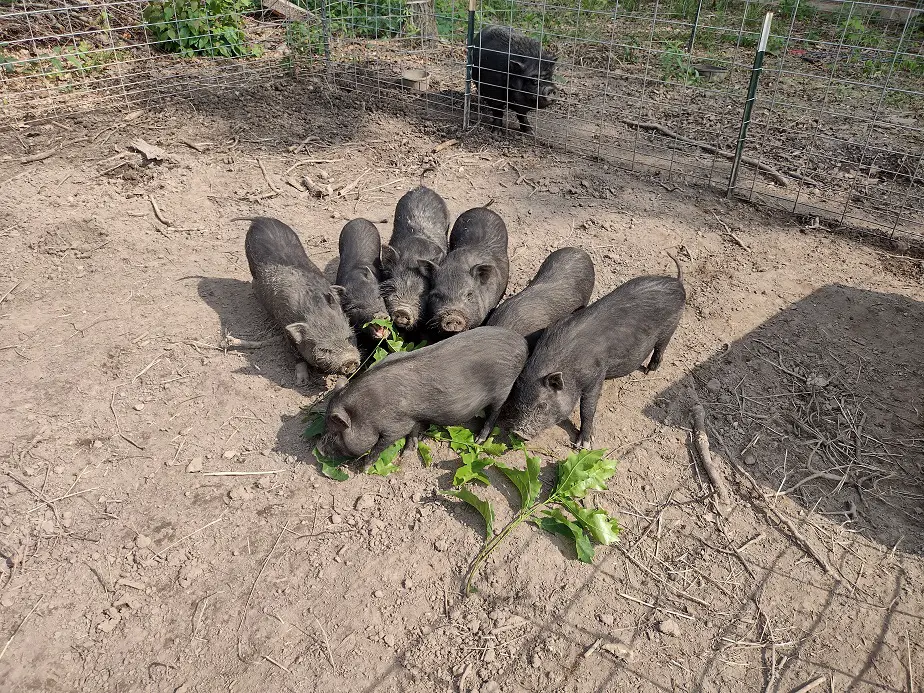I’ve been raising pigs for years in a holistic outdoor environment and have experimented with every type of feed and fodder out there.
Non-toxic tree and shrub leaves should be included in a pig’s diet. They benefit digestion, Offer beneficial minerals and chlorophyll compounds, and help prevent white muscle disease. Poplar, Willow, Mulberry, and Maple are common options, but there are many more that are safe and beneficial for swine.
I’m getting more into working with trees to provide valuable nutrients and even proteins to our pigs. Here’s what I know.
What Tree Leaves Can Pigs Eat?
My pigs routinely eat leaves from:
- Oaks (black, red, and white)
- Yellow (also, anything in the Aspen family)
- Red Maple
- Beech
- Autumn Olive
- Wild Cherry
- Red Elder
- Apple
- Mulberry
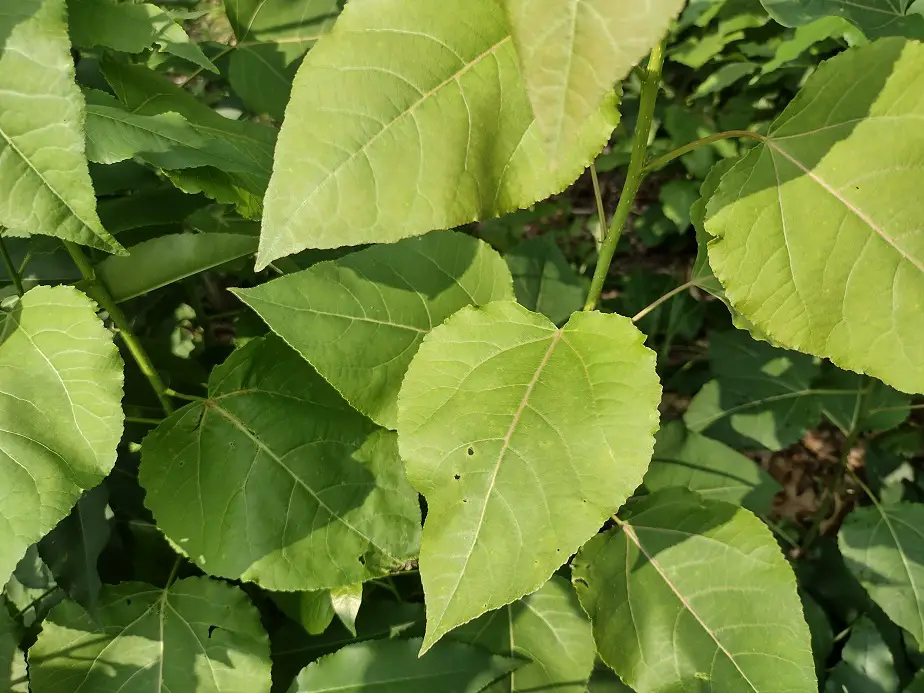
I don’t know of any tree in North America that a pig should completely stay away from. That list is pretty much all the trees in my back lot. I will give them a pretty good amount of them too.
I know that some folks have said not to feed pigs any leaves from oak, wild cherry, or red maple, citing toxicity concerns. In reality, there are none to be concerned with.
- Red Maple can be harmful to horses when the leaves are vivid red in the fall. That’s the only stage and the only animal that has any effect.
- Oak is cited as a legitimate toxicity concern to cattle if it’s more than 50 percent of their diet.
- Wild Cherry is commonly said to contain cyanide, but it doesn’t. It contains a prussic acid that was once thought to have the slim potential to become a cyanide-ish compound when wilted leaves are ingested and taken up into cells of the body of certain animals. But, I’ve yet to hear a reported case.
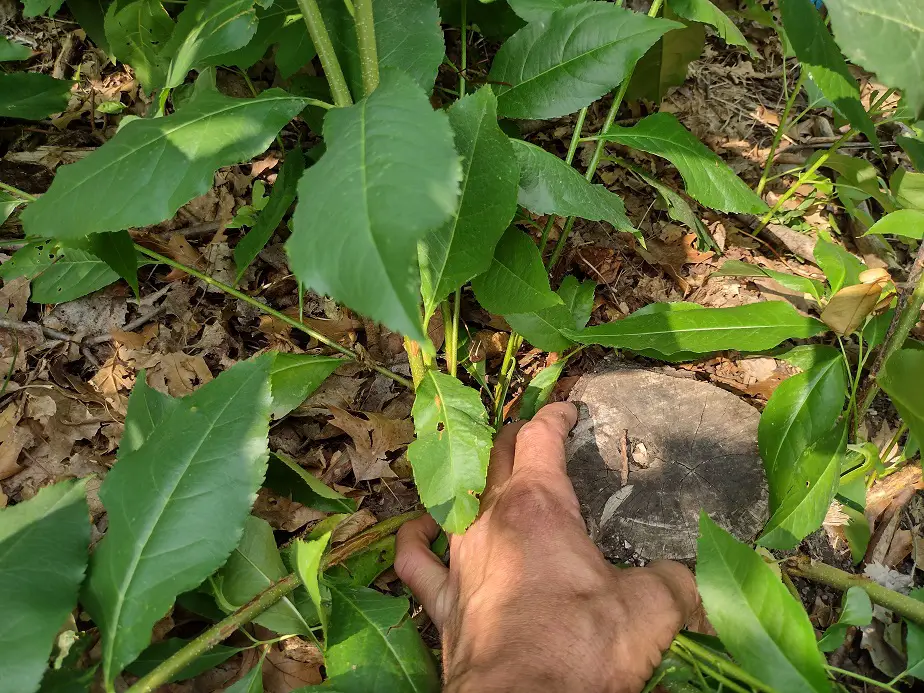
With any of these, the risks are further mitigated by feeding fresh, green leaves. I will throw an armful of boughs into my pigpen every day. It’s good for them and they love it. Their favorite is actually the Wild Cherry. Something about it, I don’t know what, they absolutely love.
Some of the coniferous evergreens can give pigs a bellyache if they eat too many needles. I’ve never heard of any real issues with that and pigs don’t seem to want to eat them anyways.
Tree leaves are a very beneficial snack to your pig’s diet. It’s like you eating a good salad. Trees are dynamic accumulators, meaning they can reach minerals in the soil other plants can’t. Tree leaves are generally quite high in minerals compared to plants like grasses, grains, and vegetables.
They are especially high in selenium, which is important. Most topsoilas lack selenium so most smaller plants lack selenium. When pigs don’t get enough selenium, they get white muscle disease. It’s characterized by rigid stiffness in the legs, and ultimately lameness. White Muscle Disease is treatable by adding extra selenium to their diet.
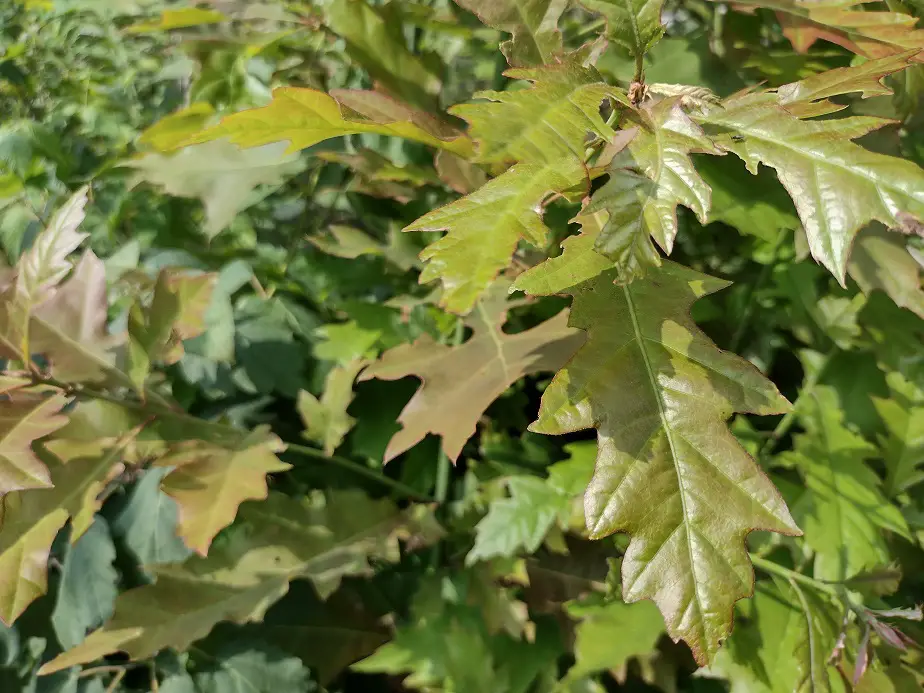
If I grow and grind up corn, sunflower seed, and lentils for pig feed, it’s probably lacking in selenium. By adding a handful of tree leaves (just about any type) it will mitigate the threat of white muscle disease.
We feed tree leaves (also called tree hay or tree fodder) daily as a mineral supplement. It makes the pigs happier and healthier. Since we don’t use any commercial feeds or prepared mineral additives, we have to add minerals from somewhere into their diet. The trees are the best source.
Don’t expect a pig to live on leaves. That’d be a bad idea. It’s going to overload them with the bitter acid compounds in leaves, it won’t give them the starch and fat they need, and it will deprive them of vitamins and a balanced protein profile.
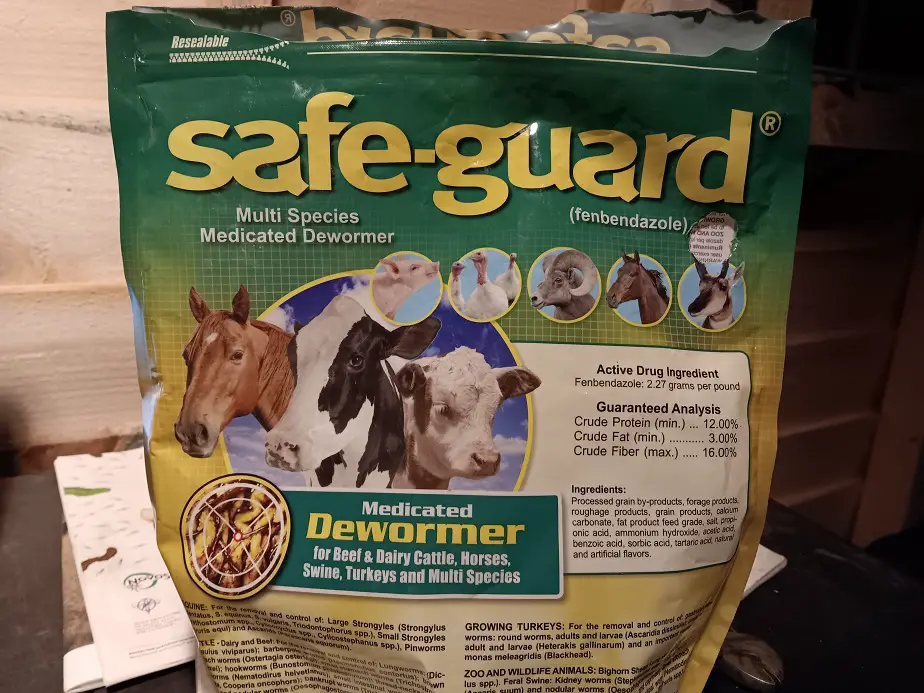
One thing you need for pigs, no matter your raising system, is a parasitic worm treatment. The best swine dewormer is Fenbendazole. It’s known by the brand name Safeguard. Safeguard is available as a medicated corn/alfalfa pellet. It’s the only way I can worm my pigs since they won’t stand still for an injection of Ivermectin. It’s easy and cheap.
- There is a stronger pellet for swine only. Here it is on Amazon
- There is a weaker pellet for general barnyard livestock, including swine. Here it is on Amazon.
I use the multi-species version because it’s what’s available in my local store and I can use it for my chickens too. It’s the most effective swine wormer and the easiest to administer. I use it on all weaned piglets and adults twice a year. Don’t go without it.
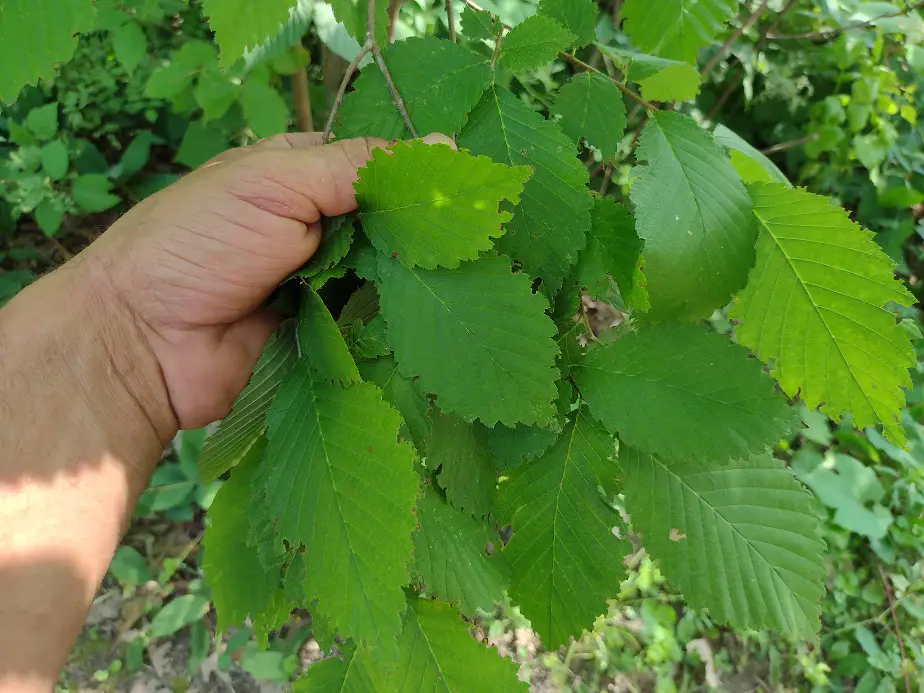
Nutrition in Tree Leaves for Pigs
Tree leaves are, across the board, high in vegetative proteins and minerals, but low in vitamins, fat, starch, and four important amino acids; Lysine, threonine, methionine, and tryptophan. While tree leaves are high in overall protein (usually 16 to 25 percent), they lack those specific amino acids that pigs need.
They are still very useful in improving the overall health, digestion efficiency, and feed conversion ratio of pigs. leaves contain small amounts of starch and sugar and virtually no fat compounds. They are quite high in fiber.
I have read numerous studies, and seen firsthand, that feeding tree leaves to pigs improves their health and function. Particularly so for lactating sows and weaned pigs. I have seen the health, vigor, and vitality of my animals improve almost immediately when given fresh green fodder, including tree leaves.
The bitter compounds in leaves have been shown to improve digestion and absorption in the gut, improve the condition of gut flora, and to have a destressing effect on swine. Particularly so for pigs raised in confinement. Considering that almost anyone can grow tree leaves, it’s likely a good choice to do it a bit yourself if you can.
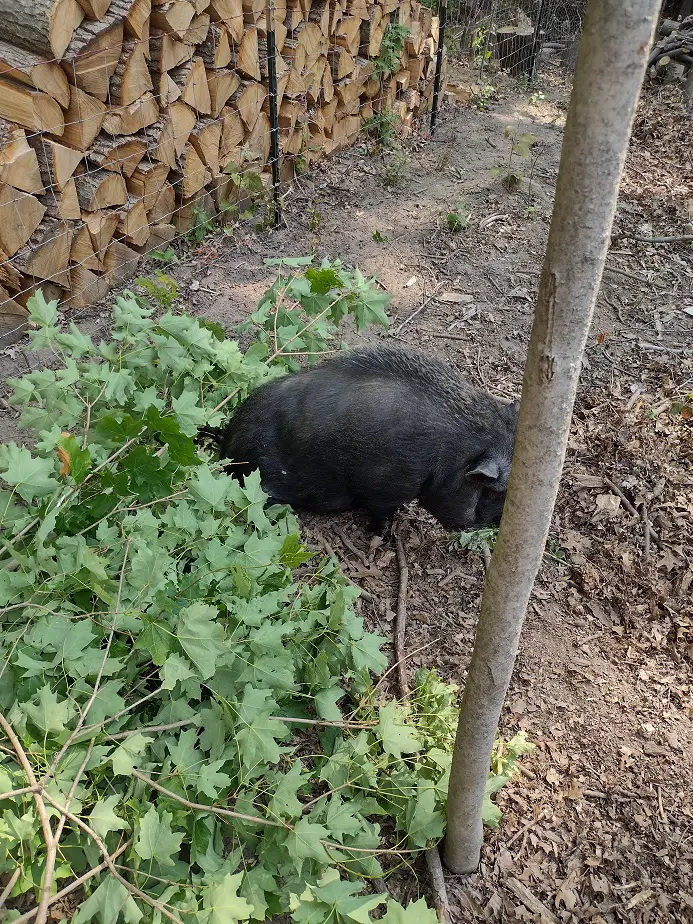
Older breeds of pigs tend to be a bit better at utilizing the nutrition from leaves and converting them into energy. Pasture or landrace breeds like the Kunekune, Guinea Hog, and Pot-Bellied Pig, do better yet. My pigs get up to 50 percent of their diet from fresh green leaves, or other green fodder daily.
If ensiled, tree leaves become higher in those missing amino acids, as well as more rich in starch. the fiber (technically an undigestible starch) becomes broken down by microbial and ezine action. The result is that much of the formally undigestable become digestible to simple-stomached animals like pigs.
Some of the undigestable proteins also become broken down during ensilage. The colonizing microbes themselves also end up as functional proteins. The whole process is just a type of anaerobic fermentation. it’s common for cattle, and less so for pigs. Although, it’s still quite practical.
That’s something that I’m experimenting with right now; making tree leaf silage for my pigs. I’m sure to write about it when I learn enough.
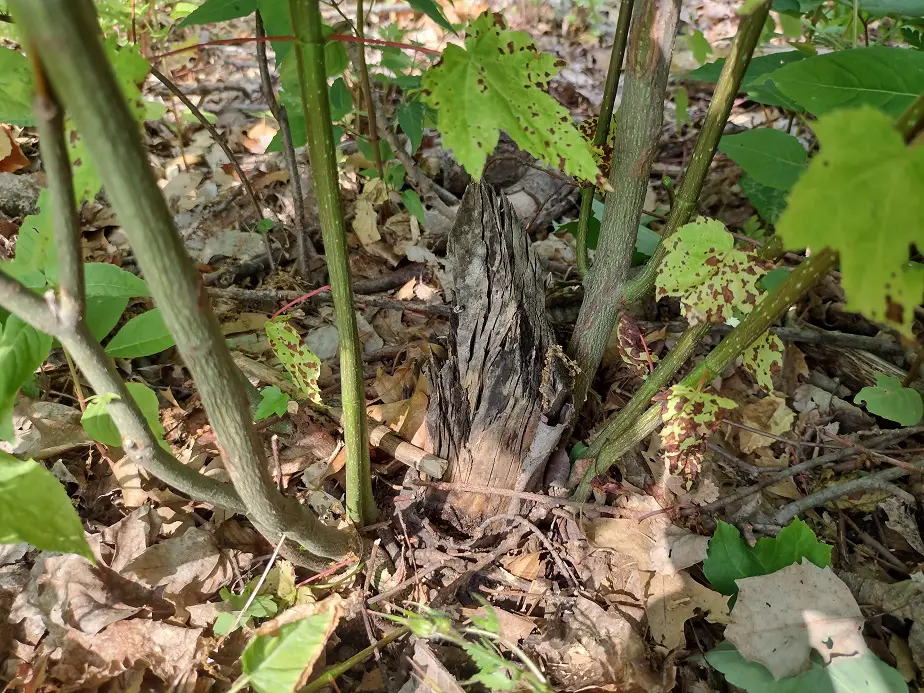
If you’re interested in starting your own fodder forest, here’s a how-to guide written by a friend of mine about planting useful trees. Here’s a link to it.
Harvesting Tree Fodder for Pigs
Pigs can eat fresh leaves from most plants, and do in the wild. My pasture pigs browse the various leafy greens in the woods, particularly the woodbine, poison ivy, and shorter trees. If I coppice trees, the pigs can eat all the lowest leaves at will. If I pollard trees, I can cut boughs for the pigs at my discretion.
Either method is potentially wonderful for a sustainable pig operation of any level. the primary tree we have as a coppiced fodder tree is Red Maple. And that’s only because it’s the most common tree in my back lot. when we cleared the mature forest trees, we had a lot of small maples left.
With any low-growing trees, either trimmed or naturally small, you can either cut boughs or rip the leaves off by hand. It’s only the leaves that pigs want.
The ones along the edge were cut to chest height, while the ones towards the center were cut low so they didn’t make too much shade. This was really a good step towards us becoming a more self-sustaining pig-raising operation.
Related Articles:

